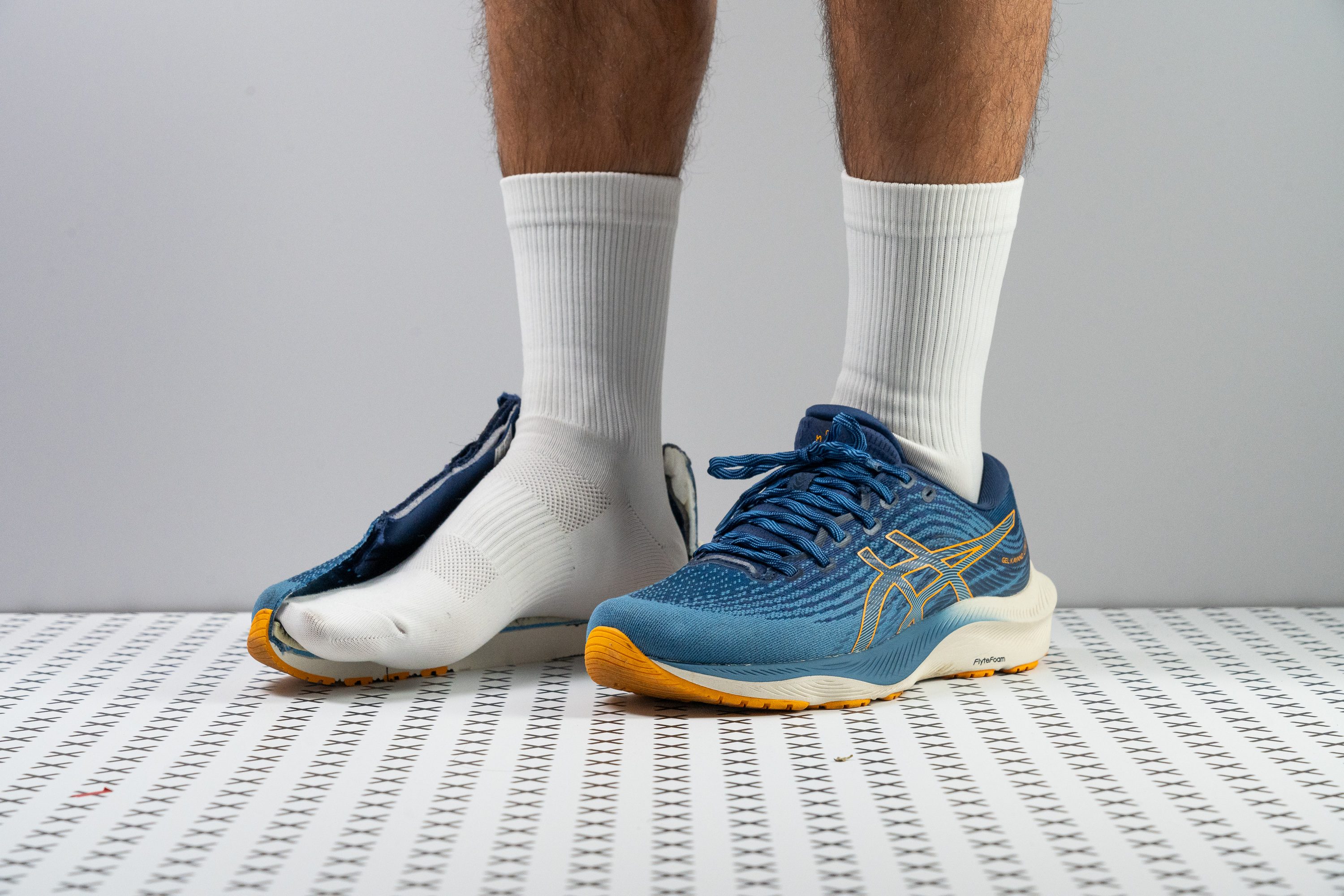Our verdict
Pros
- Superb arch support
- Lightweight stability shoe
- Highly breathable
- Soft cushioning
- Out-of-the-box comfort
- Good for wide feet
- Sustainable materials
Cons
- Pricey
- No wide widths
Audience verdict
Comparison
The most similar running shoes compared
+ + Add a shoe | |||||
|---|---|---|---|---|---|
| Audience score | 84 Good! | 89 Great! | 83 Good! | 89 Great! | |
| Price | $160 | $140 | $170 | $160 | |
| Pace | Daily running | Daily running | Daily running | Daily runningTempo | |
| Shock absorption | - | Moderate | Low | Moderate | |
| Energy return | - | High | Low | High | |
| Traction | - | Moderate | Moderate | - | |
| Arch support | Stability | Stability | Stability | Stability | |
| Weight lab Weight brand | 9.8 oz / 278g 9.9 oz / 281g | 9.8 oz / 279g 9.8 oz / 278g | 11.6 oz / 329g 11.3 oz / 320g | 9.4 oz / 266g 8.9 oz / 252g | |
| Drop lab Drop brand | 8.5 mm 8.0 mm | 10.0 mm 10.0 mm | 7.9 mm 10.0 mm | 8.5 mm 8.0 mm | |
| Strike pattern | HeelMid/forefoot | HeelMid/forefoot | Mid/forefoot | HeelMid/forefoot | |
| Size | True to size | True to size | True to size | Slightly small | |
| Midsole softness | Balanced | Balanced | Balanced | Soft | |
| Difference in midsole softness in cold | Normal | Small | Normal | Small | |
| Toebox durability | - | Decent | Good | - | |
| Heel padding durability | - | Bad | Good | - | |
| Outsole durability | - | Decent | Good | - | |
| Breathability | Breathable | Moderate | Moderate | Breathable | |
| Width / fit | Medium | Medium | Narrow | Narrow | |
| Toebox width | - | Wide | Medium | - | |
| Stiffness | Stiff | Flexible | Moderate | Moderate | |
| Torsional rigidity | Moderate | Moderate | Stiff | Moderate | |
| Heel counter stiffness | Moderate | Stiff | Moderate | Stiff | |
| Rocker | ✓ | ✗ | ✗ | ✓ | |
| Heel lab Heel brand | 31.8 mm 22.0 mm | 33.1 mm 36.0 mm | 33.2 mm 31.0 mm | 33.9 mm 36.5 mm | |
| Forefoot lab Forefoot brand | 23.3 mm 14.0 mm | 23.1 mm 26.0 mm | 25.3 mm 21.0 mm | 25.4 mm 28.5 mm | |
| Widths available | Normal | Normal | Normal | NormalWide | |
| Orthotic friendly | ✓ | ✓ | ✓ | ✓ | |
| Season | SummerAll seasons | All seasons | All seasons | SummerAll seasons | |
| Removable insole | ✓ | ✓ | ✓ | ✓ | |
| Ranking | #229 Bottom 38% | #111 Top 30% | #247 Bottom 33% | #83 Top 23% | |
| Popularity | #336 Bottom 9% | #258 Bottom 30% | #176 Top 48% | #122 Top 33% |
Size and fit
Size
ASICS Gel Kayano Lite 3 fits true to size (12 votes).
Who should buy the ASICS Gel Kayano Lite 3
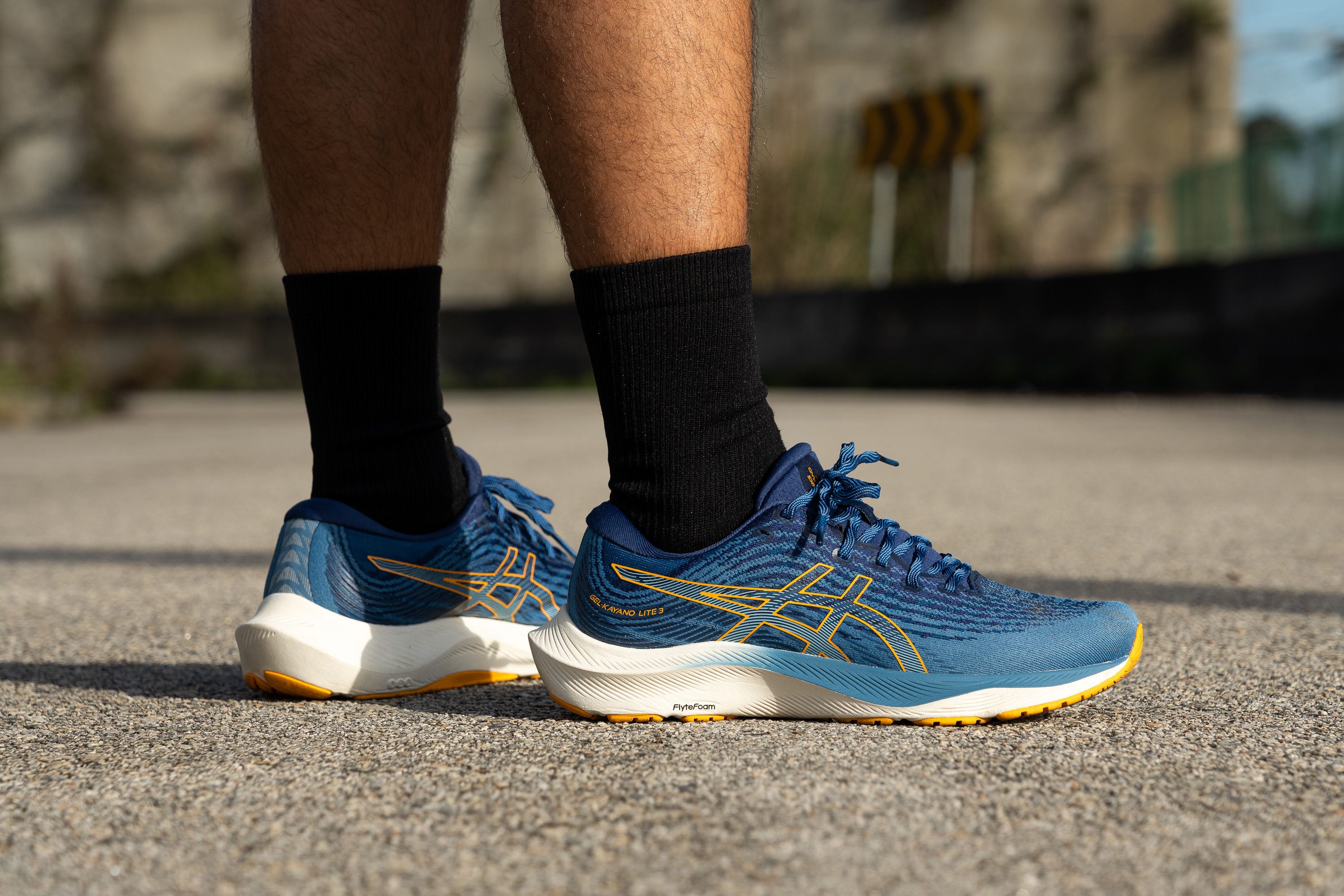
Stemming from ASICS’ unmatched Kayano collection, we recommend the Kayano Lite 3 to the following runners:
- those with flat feet, overpronation, plantar fasciitis, or any other condition that requires extra arch support
- fans of the Kayano who want the same stability but in a lighter, springier variant
Who should NOT buy
If you typically get Wide in running shoes and aren’t sure about the toebox space of the Kayano Lite 3, consider Saucony Tempus. It has a spacious toebox and is available in Wide.
On another note, if it’s the price that makes you doubt the shoe, have a look at the slightly cheaper Brooks Adrenaline GTS 22 and New Balance Fresh Foam 860 v12.

Kayano on a diet
The Kayano Lite 3 shaves off a noticeable chunk of weight from the original Kayano to provide runners with a more lightweight option.
At 9.9 oz (281g) per shoe, we found it to be lighter than Kayano 29 (10.7 oz/303g) and also lighter than stability shoes on average (10 oz/285g).
Attempting longer efforts in the shoe, we could definitely see how a lighter shoe like this Kayano can be a benefit when legs begin to fatigue.
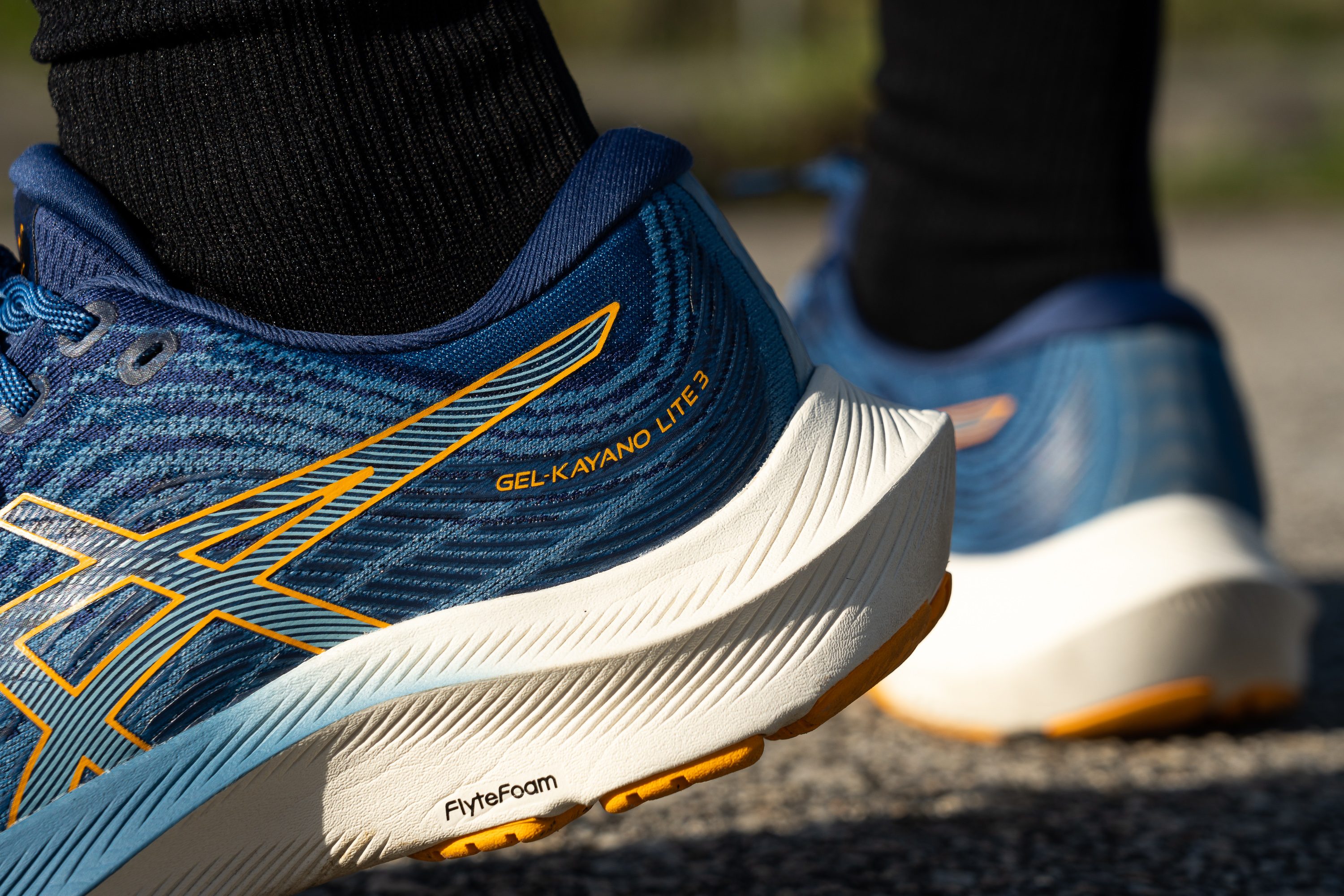
Exceptionally breathable
Taking the Kayano Lite 3 out on a warm summer day won’t be a problem thanks to its well-ventilated upper. The shoe has large ventilation pores in the toebox, tongue, and side areas which all let the air pass through easily and keep the foot refreshed.
Our smoke test below helps visualize how fast the air comes out of the shoe. Judging by the speed and amount of smoke passing through the fabric, we rated the breathability of the Kayano Lite 3 with a maximum 5 out of 5.
You can also see the size and location of the ventilation pores in this transparency test.
ASICS’ best arch support
To create a supportive platform, the brand chose to work on the geometry of the shoe as opposed to using a dual-density foam or an old-fashioned stability shank. The result is a “bucket seat” setup in which the foot is actually sitting inside the foam.
In addition, there is a Guidance Line going through the outsole from heel to toe aiming to improve your gait efficiency.
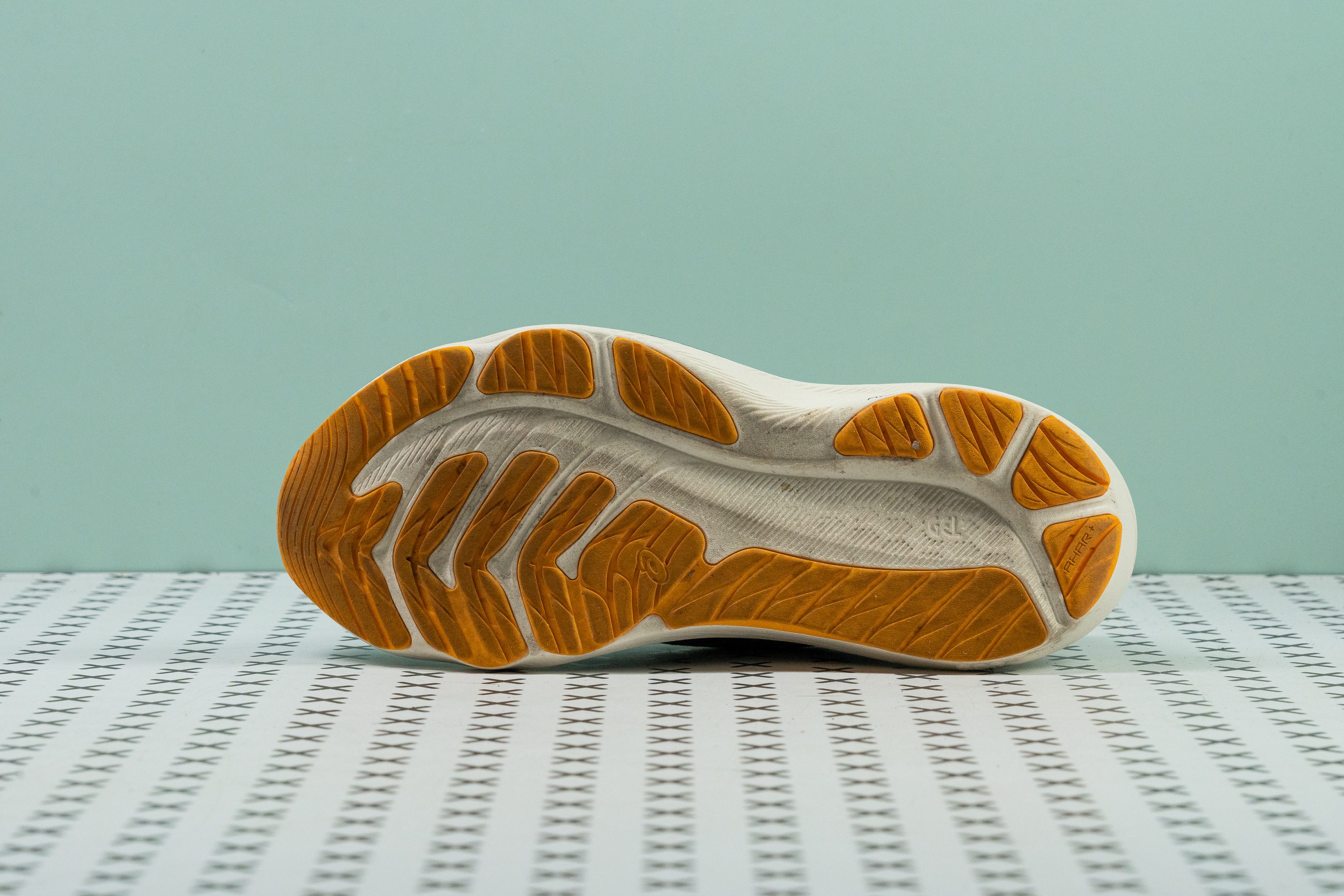
Given the shoe's subtle approach to arch support, even people with neutral pronation like us found the Kayano Lite 3 to be comfortable and unintrusive for our natural gait. We can see a place for this Kayano variation in our rotation as the shoe for long slow runs and recovery days.
Finally, we also cannot ignore the fact of how incredibly wide the shoe’s landing area is which is also a major contributing factor to stability.
The forefoot of the Kayano Lite 3 is 119 mm wide, while the heel is 95 mm. For reference, this is 6 mm and 5 mm wider than the average respectively. It’s not as wide as the Hoka Bondi 8 but is only a few millimeters away.
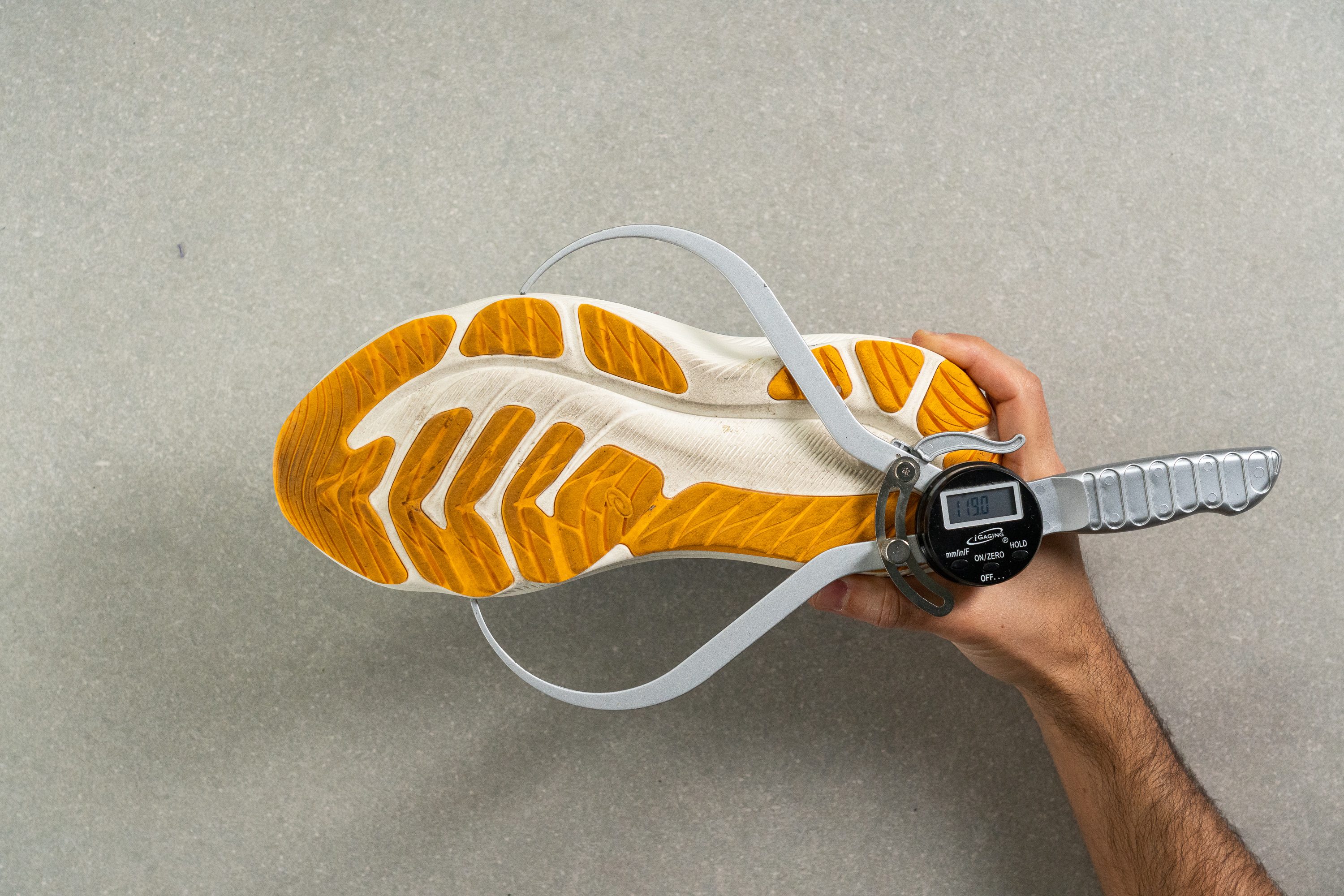
And the shoe is not rigid at all!
The traditional Kayano as well as most stability shoes tend to be stiffer and less flexible due to firmer foams and supportive technologies. But this is not the case for the Kayano Lite 3. The shoe bends easily enough in hand and on foot.
Actually, it is even a little more flexible than the average. The shoe requires 28N of force to bend it to a 90-degree angle. This is 9% less than it takes on average.
In our manual twisting test, however, the Kayano Lite 3 demonstrated less torsional flexibility. As befits a stability shoe, it is supposed to be on the stiffer side. We rated his aspect of the shoe as 3 out of 5 (where 5 is the stiffest).
Cushy comfort of the Kayano Lite 3
The combination of FlyteFoam and Gel is very common for the brand’s high-performance shoes. And we cannot express enough how much we enjoyed this cushioning setup. According to ASICS, they tried to add more toe spring to this Kayano by pulling cues from the EvoRide and GlideRide speed shoes.
We should also mention that the Lite 3 felt surprisingly soft for a Kayano. Using the durometer, we measured the shoe's foam at 21.5 HA which makes it 11% softer than average.

Keep in mind, however, that the foam will get a bit firmer in colder temperatures. After our freezer test, the durometer showed a 35% increase in density.

According to ASICS, the Kayano Lite 3 comes with an 8-mm heel-to-toe drop. This is considered within the normal range for people whose feet need support and for beginners.
Checking the shoe’s heel (31.8 mm) and forefoot (23.3 mm) stack heights, we found that the drop is 8.5 mm. This is very close to what is stated by the brand.
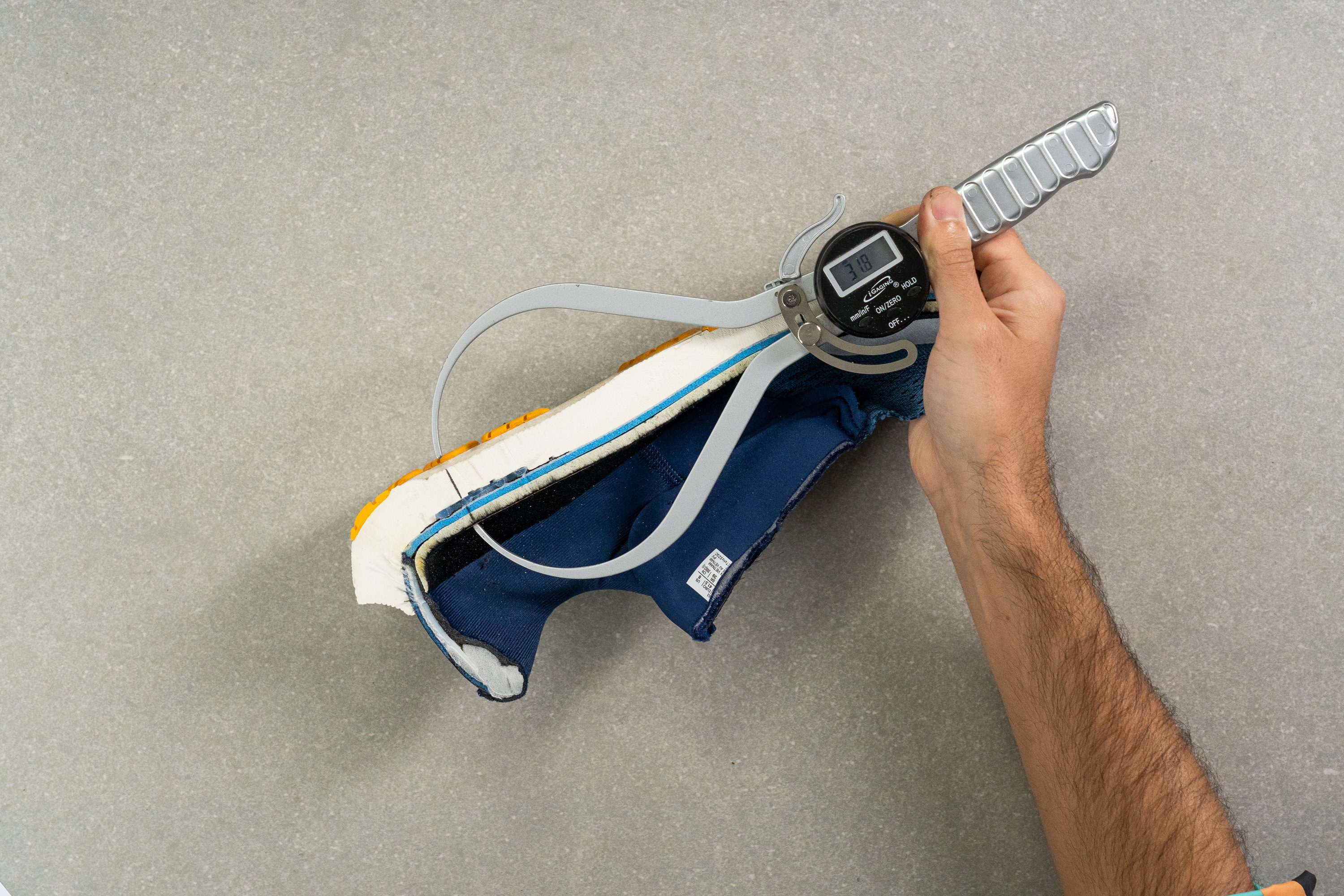

Premium-level fit and feel
The Kayano Lite 3 is comfortable straight from the box and causes no hot spots or irritation.

We also found the shoe's toebox to be rather accommodating.
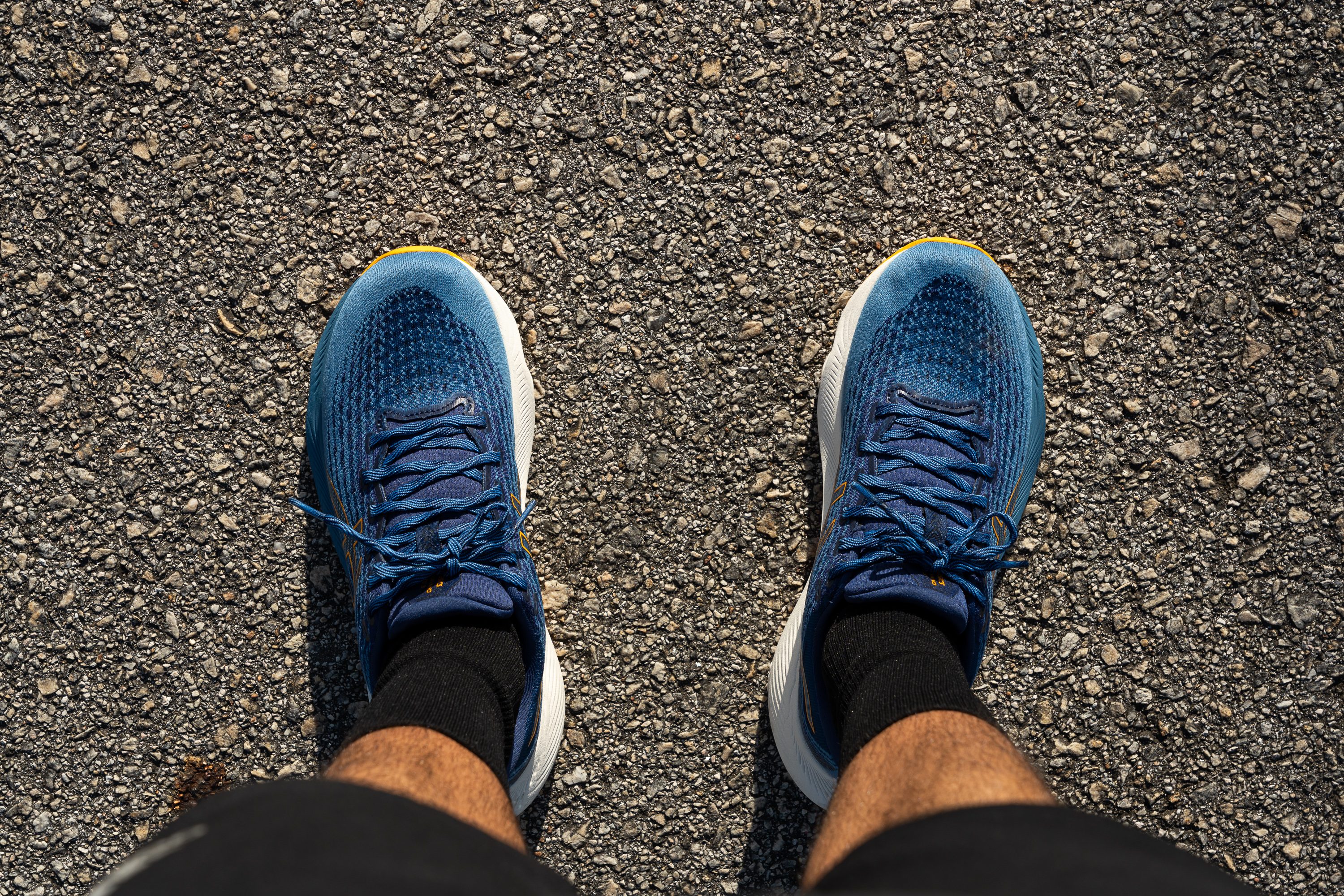
Measuring its widest part with a caliper, we got 99.4 mm which is the same as the average of road running shoes.

No complaints about heel slips either. The semi-gusseted tongue on both sides also keeps the foot securely locked in.

ASICS Gel Kayano Lite 3 is another step toward sustainability
As stated by the brand, the shoe’s mesh upper is a 70% recycled material. In addition, the FlyteFoam is made of a bio-based cellulose nanofiber. Also, the sockliner was manufactured with a process that reduces water usage.
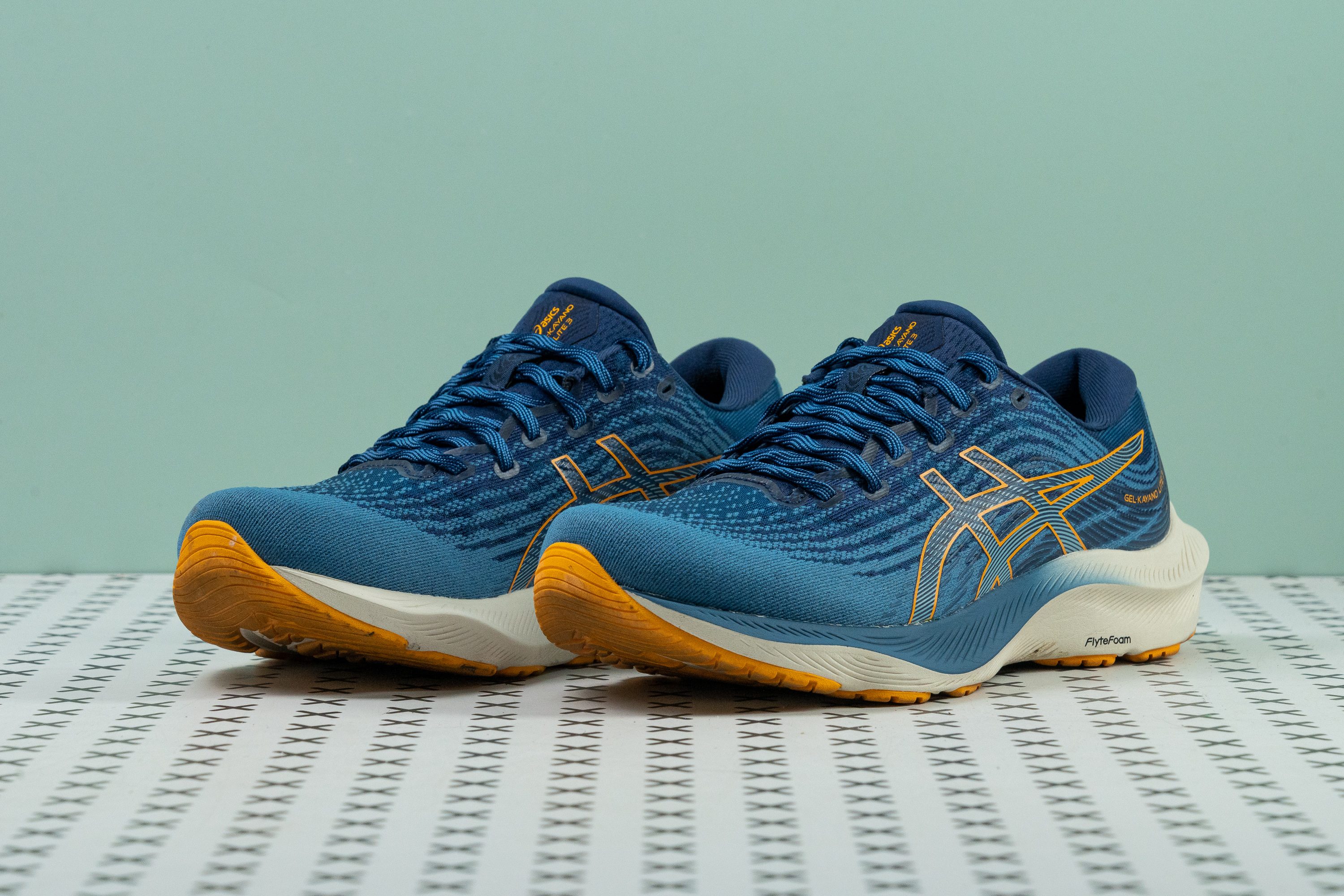
Looks like a durable shoe
Considering that the Kayano Lite 3 uses AHAR rubber for the outsole, we have absolutely no worries about its premature wear. After 30 miles of our run tests, it looks intact!
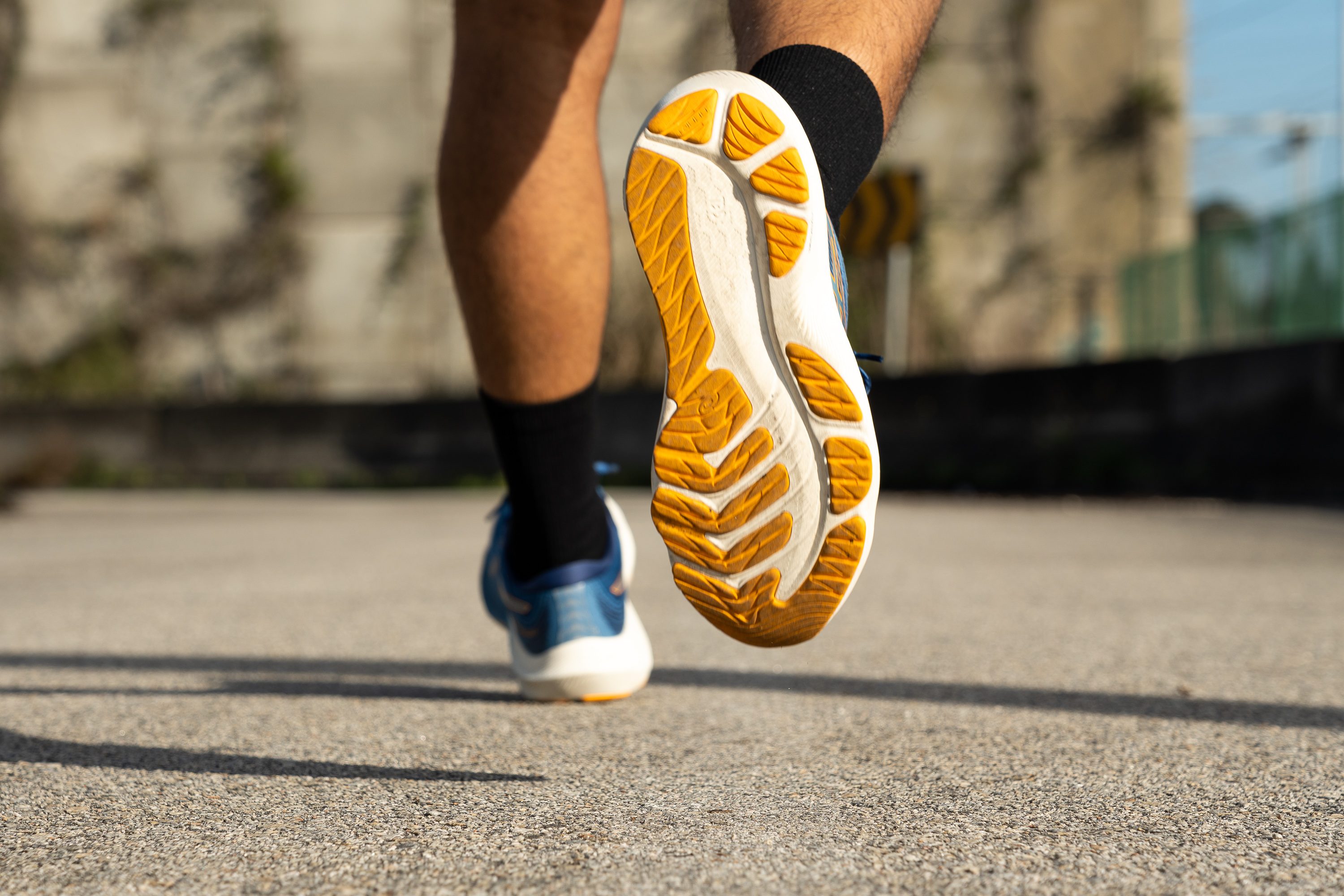
Another reassuring fact is that the rubber pieces at the bottom are 4.2 mm thick. This is a millimeter thicker than the average. We have found that there is a correlation between the outsole thickness and its durability as it takes longer for the outsole to wear out.

Worth the price but still expensive
This ASICS shoe is not the cheapest. Its asking price is the same as that of the OG Kayano 29 ($160). This is more expensive than the average price of stability running shoes ($140).


